It is no secret that the topic of cryptocurrency, NFTs, the metaverse, or anything related to blockchain technology often creates fervor from both sides of the camp. On one side, we have some of the most influential figures in the world like Warren Buffet, Charlie Munger, and Bill Gates ridiculing the prospect of investing in the space.
“In my life, I try and avoid things that are stupid and evil and make me look bad in comparison to somebody else — and bitcoin does all three” — Billionaire Charlie Munger, Vice Chairman of Berkshire Hathaway, speaking about Bitcoin
“[Bitcoin is] probably rat poison squared.” — Warren Buffet, Chairman/CEO of Berkshire Hathaway, once the richest person in the world
“[Cryptocurrencies and NFTs] are “100% based on greater fool theory.” — Bill Gates, Co-Founder of Microsoft, and also once the richest person in the world

On the other side, we have those who envision a future with blockchain technology permeating through nearly every industry and aspect of society. These investors, builders, and visionaries are steadfast in their course, all the while attempting to show the light to those camped on the other side.
“If it [Bitcoin] continues to be buried in a lot of the critiques, it means that we’re not doing a great job of showing how it works, educating around the critiques that people have and in trying to diminish those” — Jack Dorsey, Co-Founder of Twitter and Block
“My job is to say the same thing in 1000 different ways, but I can only do about 3. Pushing crypto adoption is not easy” — Changpeng Zhao (“CZ”), billionaire Founder/CEO of Binance, the largest cryptocurrency exchange in the world

But these divisive views are to be expected as it concerns a nascent technology with promise that has not as of yet proven itself on a larger scale. To think Bitcoin, a trillion-dollar asset until just recently, was spawned out of thin air only 13 years ago. The thought of it could, and does, drive people mad.
Challenging the Status Quo
“First they ignore you.
Then they laugh at you.
Then they attack you.
Then you win.”
— A quote credited to Nicholas Klein from an early 20th century speech to a labor union (often incorrectly associated with Mohandas Gandhi)
If blockchain technology reaches its potential and is successfully incorporated across various industries, it will change how traditional services and businesses operate. However, change is often faced with doubt and resistance from the status quo.
Take the above quote which illustrates this idea. Often times, challenges start by being dismissed outright. Once noticed, there will be many who mock and demean the objectives of those involved. If there is traction and the status quo is affected, there will be a fight, in one form or another, to maintain what once was. However, at that point, the war is usually already won. Even if the movement is crushed, seeds have been sown that will, sooner or later, bear fruit.
This idea applies to nearly any area of life, whether it be peaceful resistance from Gandhi or the effects of new innovations like the internet.
As a potential disrupter itself, it is safe to say that blockchain technology has already met the first two stages of this quote:
- First Stage — Ignored. If we did not ignore cryptocurrency and some of the initial use cases of blockchain technology a decade ago, we would likely be reading this piece on a yacht.
- Second Stage — Laughed at. As seen earlier, certain applications of the technology have been publicly mocked by some very powerful individuals of the old guard, like Warren Buffet and Bill Gates.
- Third Stage — Attacked.
We are just now beginning to see signs of entering the third stage, which will be explored through an analysis of the Minecraft / NFT Worlds fallout.
Introduction — Minecraft and NFT Worlds
In order to fully understand what occurred between Minecraft and NFT Worlds, an overview of each platform will be helpful.
Minecraft
Minecraft is a very popular 3D sandbox game that was fully released in 2011. It is essentially a procedurally generated 3D world (in the form of blocks) with infinite terrain for players to interact with and explore. Among other things, players can discover and extract raw materials, craft tools and items, and build various structures within the game. There are also various game modes, including a survival mode (where players try to maintain health in the face of mobs and other adversities) and creative mode (where players have unlimited resources to build). The open nature of the game has captured the imaginations of millions of fans, making it one of the best-selling video games of all time. As of April 2021, it has sold more than 238 million copies in every country and territory in the world, and has nearly 140 million monthly active players.
The game was developed by Mojang Studios, which was purchased by Microsoft for $2.5 billion in 2014. Mojang has since operated as a subsidiary of Xbox Game Studios (formerly Microsoft Studios), which has published some of the biggest franchises ever including Age of Empires and Halo.

NFT Worlds
NFT Worlds was created with a vision to become “the first truly decentralized, cross-platform (computers/consoles), community-driven and developed play-to-earn gaming metaverse of its kind.” At a high level, think of it like The Sandbox or Decentraland in terms of a metaverse with Web3 properties (i.e., virtual worlds with digital ownership), but with its own twist on gameplay, community, and structure.
Importantly, the gaming ecosystem / platform that NFT Worlds was initially built on was not created from scratch. Instead, the creators bootstrapped NFT integration / decentralization on top of a proven open-source game — Minecraft. NFT Worlds would be able to potentially tap into over 100 million active players on Minecraft while separately innovating on NFT integration and the decentralized metaverse side of the platform. In other words. they would carve out a piece of Minecraft and make it Web3-compatible.
Although currently outdated given recent events, additional details concerning NFT Worlds can be found in the project’s white paper.

Minecraft Bans NFTs and Blockchain Technology
The relationship (if you may call it that) between Minecraft and NFT Worlds was officially shattered on July 20, 2022 when Minecraft effectively banned NFTs and other blockchain technologies on the Minecraft server.
“To ensure that Minecraft players have a safe and inclusive experience, blockchain technologies are not permitted to be integrated inside our Minecraft client and server applications nor may they be utilized to create NFTs associated with any in-game content…” — A tweet from Minecraft that effectively banned blockchain technologies in the game
With a single tweet, Minecraft effectively made it impossible for NFT Worlds and numerous other projects to continue building within the Minecraft ecosystem without risk of breaching usage guidelines.

Minecraft’s Explanation for the Ban
Minecraft provided an official statement on the ban in which they stated that NFTs and other blockchain technologies, which create digital ownership based on scarcity and exclusion, do not align with Minecraft’s values of creative inclusion and playing together. They believe this technology creates a scenario of “haves and the have-nots,” and that the speculative pricing and investment mentality around NFTs takes the focus away from playing the game and encourages profiteering, which is inconsistent with the long-term joy and success of their players.
An example of how NFTs could be used within Minecraft might help in understanding the above reasoning. Suppose there is a Web3 racing project building on Minecraft. This project might release 5,000 unique banners as NFTs for players to deck out their sports cars with. As NFTs, each one of these banners is unique (just like a banner in real life). So, once all 5,000 banners are distributed, there is no way to get one unless, for example, players purchase or trade for one in-game. The same example can essentially apply to any item imaginable within the Minecraft (or other digital) universe.
Here’s another way to think about NFTs in gaming — think back on a video game that you played in the past. I’m sure that game had a car, piece of furniture, weapon, or other item that you interacted with. When you turned off the game, that item’s existence turned off with it. However, what if that item, written into its code, was unique from all other such items. Its identity would extend beyond the game itself — for example, you would have the ability to move it into other digital worlds, where it would still retain its being. Like any scarce / unique item in a free-market (whether digital or physical), people may also ascribe value to it if they so choose. This potential is what NFTs unlock.
Minecraft is therefore correct in that there is an element of exclusion with NFTs. However, the irony of the situation is that Minecraft already excludes players in very similar ways. For example, only a couple days after announcing the NFT ban, Minecraft launched their own limited edition action figure based on the game.
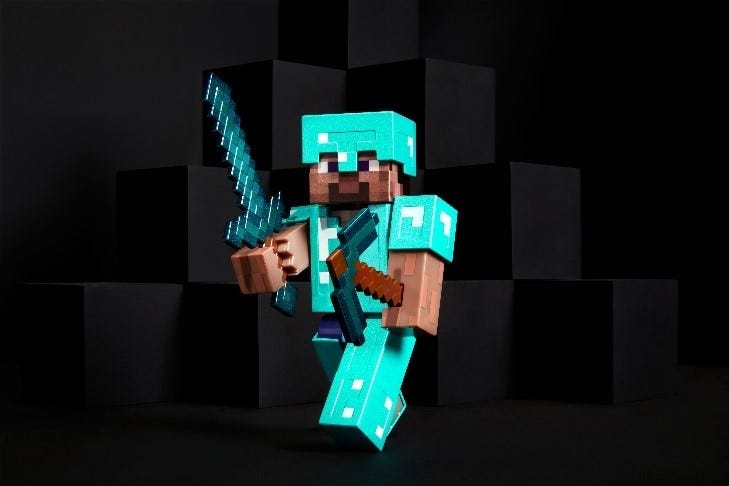
Minecraft is concerned about “scarcity” and “exclusion” with NFTs, but at the same time launches scarce, limited edition, and costly merchandise to their child audience.
It may not be obvious to Minecraft or the broader public yet, but there is not much of a difference between excluding players from action figures (e.g., Minecraft Diamond Level Steve) and excluding them from in-game digital items. If the idea of digital scarcity were wrapped in a term that carried less of a stigma, it’s possible that people would be much more receptive to the technology. Over time, this evolution in thought will likely occur.
Probably the Real Reason for the Ban
Notwithstanding Minecraft’s official statement, there are two more plausible reasons for the ban. First, as touched on above, is a lack of understanding regarding NFTs and blockchain technology.
It is immediately clear from Minecraft’s official statement that they have little knowledge concerning NFTs and blockchain technology.
“An NFT is a unique, non-editable, digital token that is part of a blockchain and often purchased with cryptocurrencies like Bitcoin.” — Minecraft’s definition of an NFT from their official statement banning the technology
If you’ve ever purchased an NFT or even remotely follow the space, you would know that Bitcoin does not natively support NFTs (although there is an emerging movement enabling Bitcoin-backed NFTs). This statement is therefore pretty embarrassing for Mojang, Microsoft, or whoever put it out. I’m honestly shocked that a major corporation would put in so little effort to research something, particularly when that something is an emerging and potentially disruptive technology. We are early, but this is still surprising.
I can picture the scene: Mojang or Microsoft officers discovering random headlines about speculation and scams occurring in the space (some of which are true), and becoming very nervous. Rather than learning about the technology and what doors it can open, they put the brakes on immediately to figure things out. I can’t blame them entirely for this approach, as we generally fear what we don’t understand and there is money and reputation on the line, but it could have been done better. For example, a warning to Web3 projects who had put in millions building on Minecraft before the ban could have gone a long way. Remember, the announced ban largely came as a surprise to these projects — until then, they were not technically in breach of any rules.

The other part of the equation was the curious relationship between Mojang and the Web3 projects building on Minecraft. Despite their innovation, I am sure Mojang was not happy with various projects potentially profiting off the Minecraft ecosystem. Mojang also had no control over how these projects used their profits, which may have caused additional alarm (e.g., what if some projects were scams). Mojang therefore wanted to take back control — if anyone was going to profit from Web3 innovations on the Minecraft server in the future, it would be them. As a business, this stance is understandable, but it runs counter to the open-source ethos that Minecraft was built on and therefore rubbed a lot of people wrong. Open-source was good for Minecraft until innovation started to redistribute power and profits to the players — a classic example of Web2 (centralization) battling Web3 (decentralization).
This Battle Has Just Begun
No matter the reason behind Minecraft’s ban on blockchain technologies, it is clearly unfortunate for all the emerging Web3-based game platforms that were legitimately innovating on the server. However, it is not the end of the world for all of these projects. In the aftermath of the ban, NFT Worlds, which was the largest of the gaming ecosystems building on Minecraft, announced that they would create a new game and platform based on many of the core mechanics of Minecraft, but with Web3 integration. This game is actively under development and expected to launch in various stages over the coming months and year.
“Make no mistake, this is a web2 vs web3 battle. It is a battle between two different visions of the future of the web: one that prioritizes shareholder value and profit margins above all else and one that prioritizes the spirit of innovation through independent creators. It is both a philosophical conflict over what the Internet represents, and a technological struggle over who will have ownership of digital assets. Microsoft has made it clear they will always act in the interest of their shareholders and balance sheet, to the detriment of innovation, player experience and creators. We believe an open, free, evolved version of what Minecraft brought to the world will be a better future for creators, developers and ultimately gamers.” — A statement from NFT Worlds following the Minecraft ban

There is a chance the ban even ends up being a blessing in disguise for NFT Worlds, who can now build a Web3-based game platform free from the overwatch and censorship of Microsoft and Minecraft. Considering the talent and track record of one of the project’s co-founders (@iamarkdev on Twitter), as well as the project’s multi-million dollar war chest, there is still a real fighting chance for it to succeed.
In the not-too-distant future, I would not be surprised to see a world where blockchain technology is so pervasive in games and other industries that the term “NFTs” is no longer used. It will become so commonplace that the term will no longer be novel, much like we don’t refer to HTML and similar core technologies utilized on the current web. I’m talking about using NFTs not just in gaming, but for ticket sales, music, digital identities, and more. However, we are definitely not there yet. The Minecraft / NFT Worlds incident will likely serve as one example among many still to come in the ongoing tug-of-war between traditional Web2 companies and Web3 innovators.
References
- Pushing Crypto Adoption Is Not Easy: Binance CEO Changpeng Zhao
- Warren Buffett Gives His Most Expansive Explanation for Why He Doesn’t Believe in Bitcoin
- Bill Gates Says Crypto and NFTs Are ‘100% Based on Greater Fool Theory’
- Bitcoin-Loving Block Boss Jack Dorsey Lays Out 2 Things That Could Prevent Crypto From Succeeding in the Next 5 Years
- NFT Worlds White Paper
- Minecraft Wikipedia Page
- Minecraft Fandom Wiki Page
- Minecraft Website

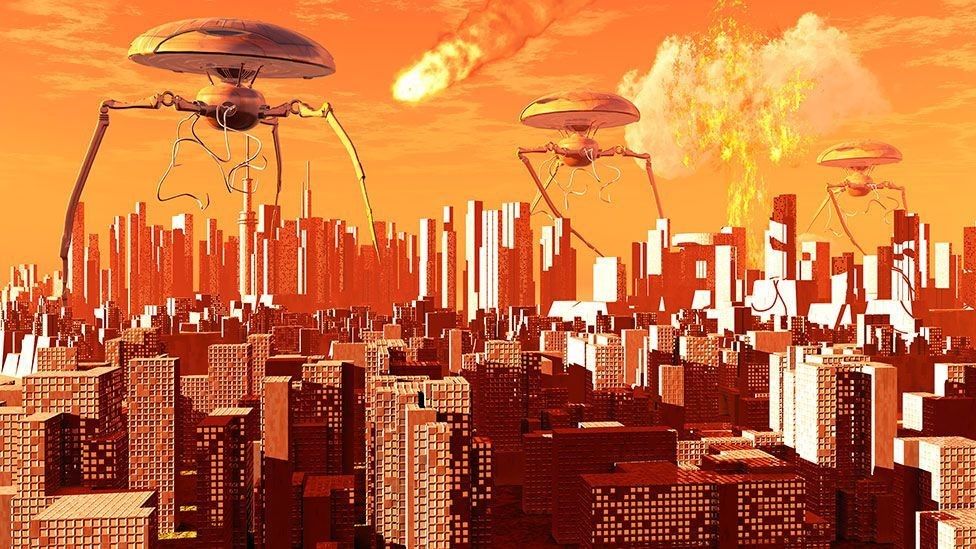
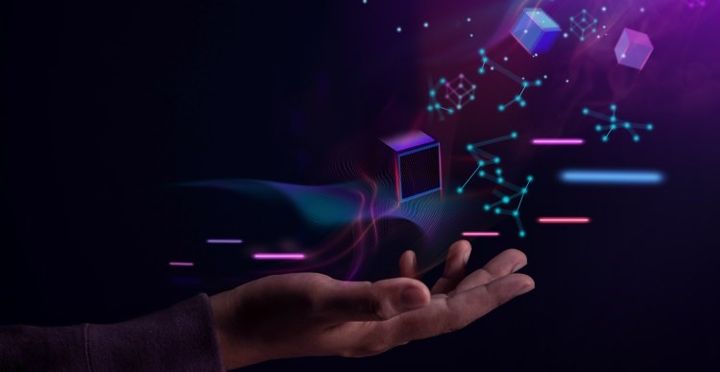
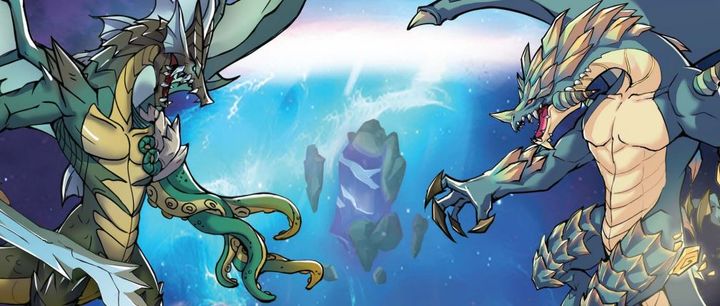
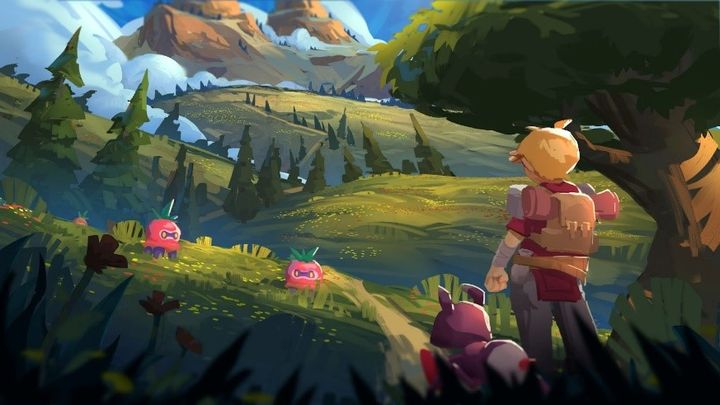
Comments ()